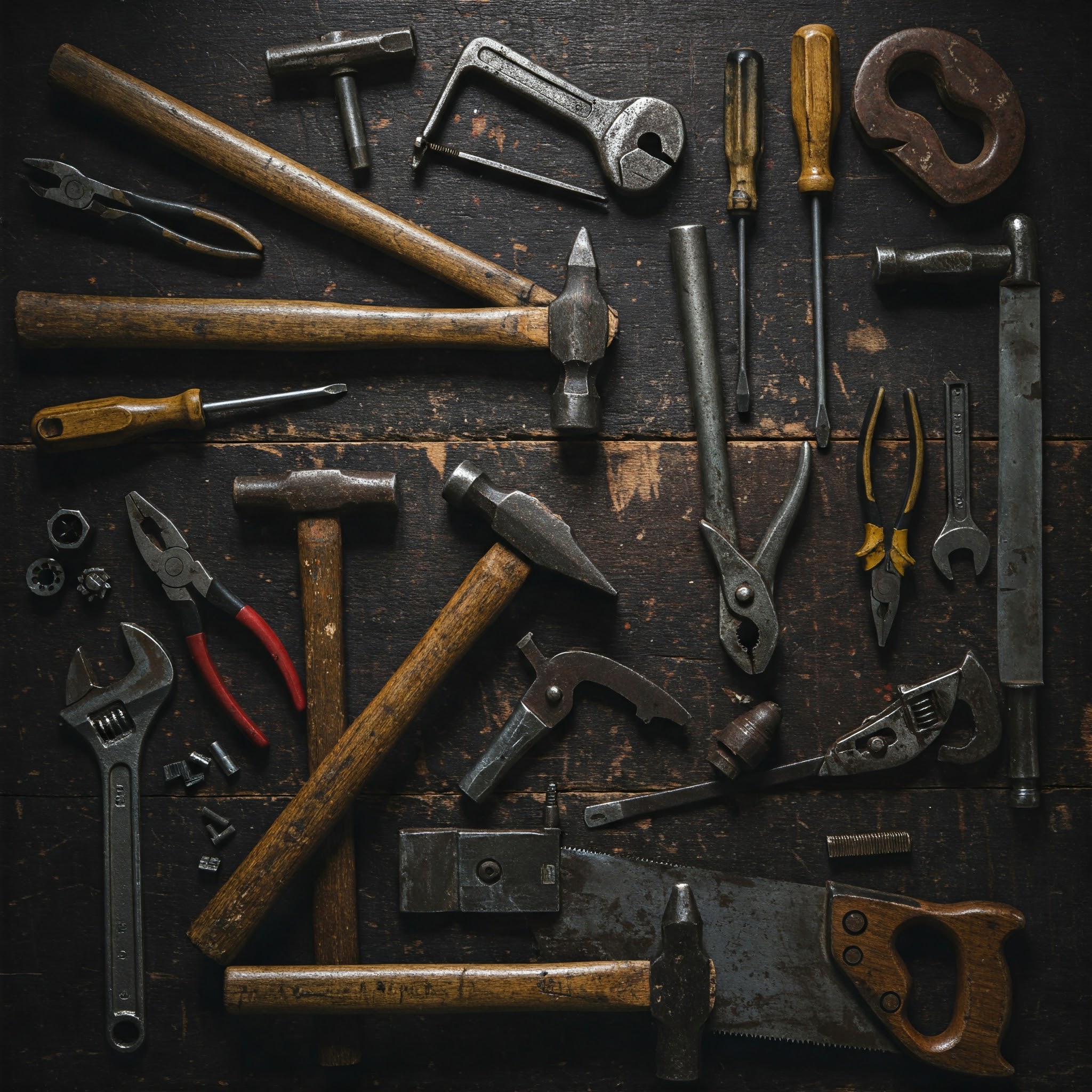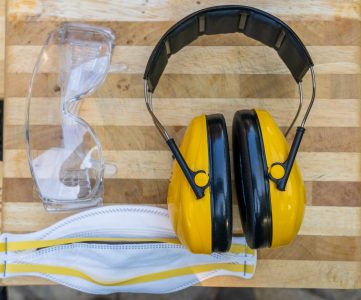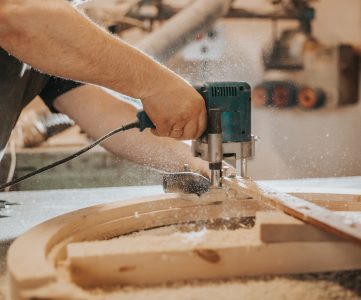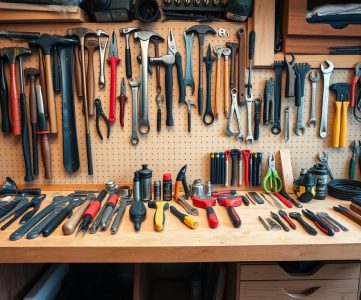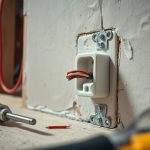For any DIY enthusiast, a well-maintained set of hand tools is essential. It ensures projects are completed efficiently and effectively. A tool maintenance checklist is key to keeping your tools in top condition. This guide will cover essential DIY tool upkeep, including cleaning, sharpening, and storage.
Adopting a tool maintenance checklist means your tools will always be ready for your next project. This approach saves time and money over the long term. Proper care of your tools extends their lifespan and prevents damage. We will discuss the importance of a tool maintenance checklist and offer tips on maintaining your hand tools.
Key Takeaways
- Creating a tool maintenance checklist helps extend the life of your tools
- Proper DIY tool upkeep saves time and money
- A tool maintenance checklist should include cleaning, sharpening, and storing tools
- Regular maintenance prevents damage to your tools
- A well-maintained set of hand tools is essential for completing projects efficiently
- Following a tool maintenance checklist ensures your tools are always ready for your next project
Why Tool Maintenance Matters for DIY Success
A well-planned tool care routine is crucial for every DIYer. It extends tool life and ensures they work well. By following hand tool maintenance tips, DIYers save time and money. Proper care prevents damage and reduces replacement needs.
Some key benefits of a tool care routine include:
- Extended tool lifespan
- Improved tool performance
- Enhanced safety
- Cost savings
Following a hand tool maintenance tips guide helps DIYers create a routine. This routine suits their needs and helps achieve project goals. It includes regular cleaning, storage, and inspection to prevent damage and ensure tools work well.
Regular maintenance prevents accidents and injuries, making it vital for DIY projects. By focusing on tool care routine and hand tool maintenance tips, DIYers keep tools in good condition. This ensures they continue to function properly.
By adding these simple tips to their daily routine, DIYers can have a safer and more successful DIY experience.
| Tool Type | Maintenance Tips |
|---|---|
| Hand Tools | Regular cleaning, storage, and inspection |
| Power Tools | Regular cleaning, lubrication, and inspection |
Essential Tool Maintenance Checklist for Your Workshop
A well-organized workshop is crucial for any DIY success. To ensure your tools remain in prime condition, a tool maintenance checklist is essential. It should cover cleaning, sharpening, and storage to avoid damage and preserve functionality.
Establishing a routine and adhering to it is critical for tool upkeep. Your tool maintenance checklist should include key tasks:
- Clean tools after each use to prevent dirt and debris buildup
- Sharpen tools regularly to maintain their cutting edge
- Store tools in a dry, secure location to prevent damage and rust
Adhering to this tool maintenance checklist ensures your tools are always ready for your next project. Proper upkeep is vital for achieving professional results and extending tool lifespan.
Regular maintenance saves time and money, preventing accidents from poorly maintained tools. So, invest time in creating a tool maintenance checklist and follow it. Your tools and projects will appreciate it.
Cleaning and Rust Prevention Techniques
Keeping your hand tools clean and preventing rust are key to their longevity and performance. A well-maintained tool not only lasts longer but also works better. It’s vital to have a consistent tool care routine that includes regular cleaning and rust prevention. This approach helps avoid damage and keeps your tools in optimal condition.
For cleaning, mild soap and water are best. Steer clear of harsh chemicals or abrasive materials that can harm your tools. For tools with moving parts, a small amount of oil can keep them lubricated and running smoothly. This simple step can be part of your daily tool care routine, helping to extend the life of your tools.
Proper Cleaning Methods
- Use mild soap and water to clean tools
- Avoid harsh chemicals or abrasive materials
- Apply oil to moving parts for lubrication
By following these cleaning methods, you can prevent rust and corrosion. Regular cleaning and maintenance help you spot potential issues early. As part of your tool care routine, ensure your tools are dry after cleaning to prevent rust and corrosion.
Sharpening and Edge Care Guidelines
Sharpening and edge care are vital for your hand tools’ performance and longevity. A detailed tool maintenance checklist must include these tasks. Regular sharpening and edge care in your DIY tool upkeep routine keeps your tools sharp and effective.
Sharpening tools can be done with stones or files. It’s crucial to pick the right sharpening stone or file for your tool. Different tools need different sharpening tools. Here are some sharpening and edge care tips:
- Use a sharpening stone or file that is specific to your tool
- Always sharpen your tools in the same direction, never back and forth
- Use light pressure and make smooth, even strokes
- Check your tool’s edge regularly and sharpen it as needed
By following these guidelines and adding sharpening and edge care to your tool maintenance checklist, you can maintain your tools’ condition. Regular DIY tool upkeep also prevents damage and extends your tools’ lifespan.
Proper Tool Storage Solutions
Keeping your hand tools in top condition requires a well-thought-out tool care routine. This includes regular cleaning, sharpening, and proper storage. A good storage system prevents damage, reduces loss risk, and makes tools easier to access. We’ll discuss the importance of climate control, organization, and moisture prevention in tool storage. You’ll gain valuable insights into maintaining your tools effectively.
Climate control is a critical aspect of tool storage. Extreme temperatures and humidity can harm your tools. It’s essential to store them in a stable, dry environment. Using toolboxes, cabinets, or pegboards for organization keeps tools tidy and accessible. This approach saves time and prevents damage from misplaced tools.
Preventing moisture is another key factor in tool storage. Moisture can lead to rust and corrosion, damaging your tools. To combat this, use moisture-absorbing products or store tools in airtight containers. These strategies can help extend your tools’ lifespan and keep them in optimal condition. By adopting these hand tool maintenance tips, you can create an effective storage system that meets your needs.
Tool Storage Tips
- Store tools in a dry, temperature-controlled area
- Use organization systems such as toolboxes, cabinets, or pegboards
- Use moisture-absorbing products or store tools in airtight containers
By incorporating these tool storage tips into your routine, you can ensure your hand tools remain valuable assets. They will continue to perform well in your workshop or projects.
Maintaining Power Tool and Hand Tool Combinations
DIY projects require a mix of power tools and hand tools for efficiency. A detailed tool maintenance checklist is key to keeping tools in top shape. Regular DIY tool upkeep ensures tools last longer and work better.
To develop a maintenance routine, consider these tips:
- Store your power tools and hand tools in a dry, clean area to prevent rust and damage.
- Regularly inspect your tools for signs of wear and tear, and replace them as needed.
- Use a combination of power tools and hand tools to complete tasks, as this can help reduce fatigue and improve accuracy.
By adopting these strategies and adding them to your tool maintenance checklist, your tools will stay in optimal condition. This approach enhances your DIY project outcomes, maximizing the value of your DIY tool upkeep efforts.
For any DIY enthusiast, maintaining tools is crucial. Prioritizing tool maintenance checklist and DIY tool upkeep ensures your tools remain reliable, project after project.
Seasonal Tool Care and Maintenance Schedule
As seasons shift, it’s vital to tweak your hand tool care routine. A well-thought-out maintenance plan can significantly prolong your tools’ lifespan. This section delves into the significance of seasonal care and outlines a schedule to keep your tools in prime condition.
Adherence to a routine is key for tool upkeep. Integrating maintenance into your daily and monthly routines can ward off rust, corrosion, and wear. A consistent regimen also aids in spotting potential issues early, averting major problems.
Spring Cleaning Checklist
- Clean and inspect all tools for damage or wear
- Apply rust prevention products to metal tools
- Sharpen dull blades and edges
- Organize and store tools in a dry, secure location
Winter Storage Preparation
Before winter storage, ensure tools are clean and dry. Use a rust-inhibiting coating on metal tools. Store them in a dry, secure spot to prevent damage and corrosion.
Monthly Maintenance Tasks
| Month | Maintenance Task |
|---|---|
| January | Inspect and clean all tools |
| February | Sharpen dull blades and edges |
| March | Apply rust prevention products to metal tools |
Adopting this seasonal care and maintenance plan can extend your tools’ life and prevent damage. Always prioritize hand tool maintenance tips. Incorporate them into your daily and monthly tasks to keep your tools in optimal condition.
Common Tool Maintenance Mistakes to Avoid
Many overlook the value of a tool maintenance checklist in DIY tool upkeep. This neglect can shorten tool lifespan and reduce performance. Understanding these mistakes and how to sidestep them is crucial.
A detailed tool maintenance checklist should cover cleaning, storage, and upkeep tasks. Neglecting cleaning can harm tools and lessen their utility. Inadequate storage also causes rust and corrosion, affecting tool efficiency.
To establish an effective DIY tool upkeep regimen, consider these steps:
- Regularly clean and inspect tools for damage or wear
- Store tools in a dry, secure location to prevent rust and corrosion
- Schedule maintenance tasks, such as sharpening and lubrication, to ensure optimal tool performance
By sidestepping common tool maintenance errors and adhering to a thorough tool maintenance checklist, tools stay in prime condition. This reduces the need for frequent replacements and minimizes downtime. Such proactive maintenance saves time and money, proving DIY tool upkeep a valuable investment.
A well-maintained tool is a safe and efficient tool. By prioritizing tool maintenance and following a structured tool maintenance checklist, individuals can enjoy a more productive and successful DIY experience.
Keeping Your Tools Ready for Every Project
Maintaining your hand tools is crucial for successful DIY projects. By following the comprehensive tool care routine and hand tool maintenance tips outlined in this article, you can ensure your tools are always ready to tackle your next home improvement task.
Proper tool care extends the lifespan of your equipment, enhancing safety and efficiency. Take the time to clean, sharpen, and store your tools correctly. Create a seasonal maintenance schedule to keep them in top condition. With a little effort, you’ll be able to rely on your well-maintained tools for years to come. This will allow you to complete every project with confidence and ease.
